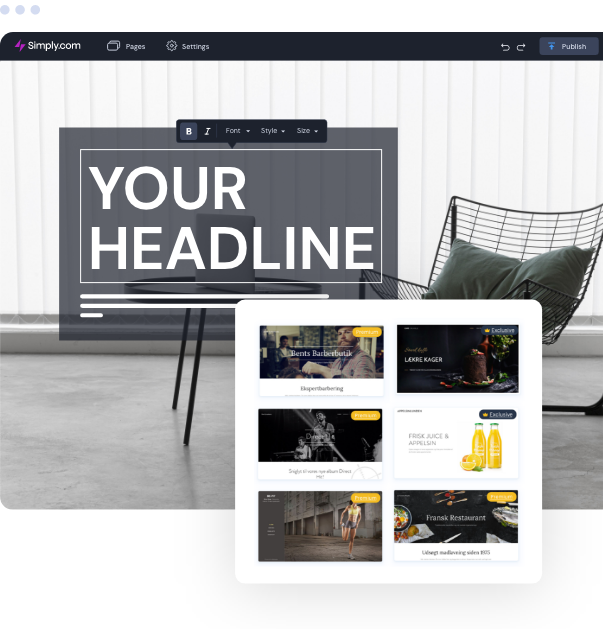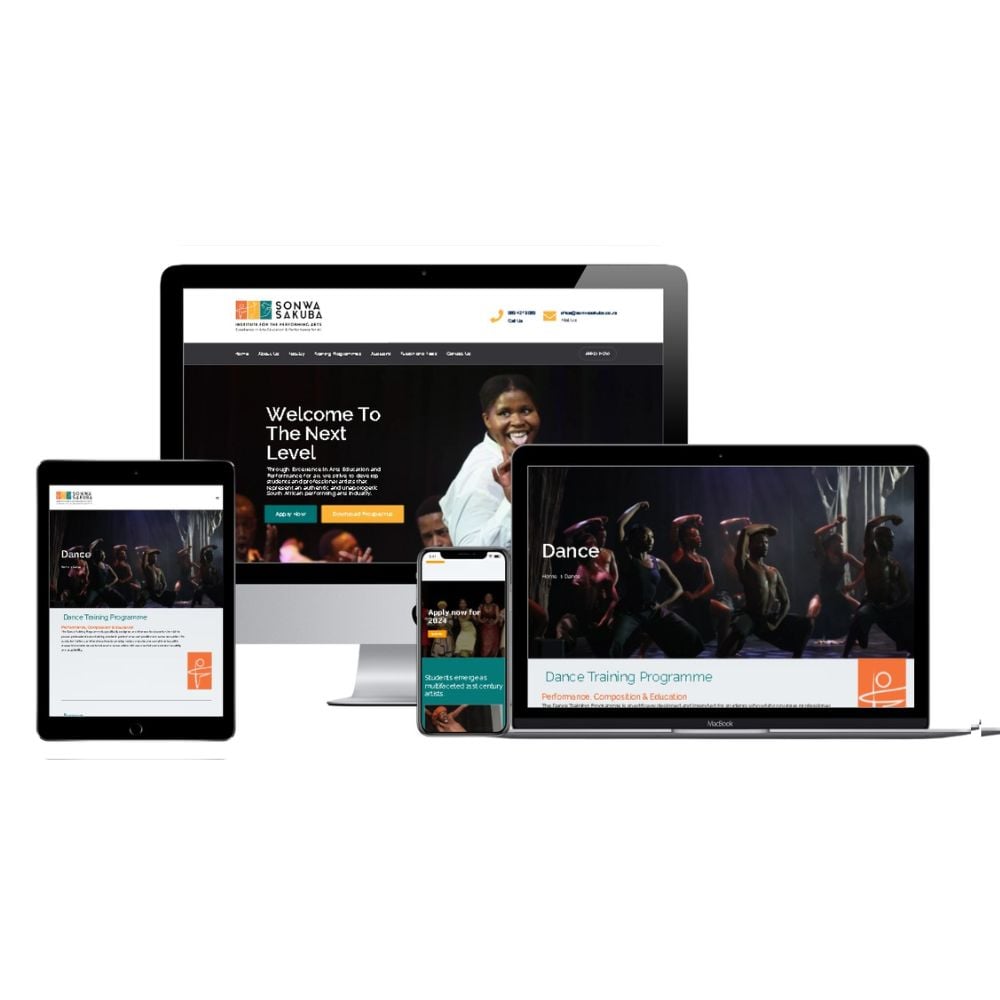Why Every Business Requirements a Solid Website Design for Online Exposure
The Effect of Aesthetics and Functionality in Successful Web Site Layout Projects
A visually engaging format is more than just a feast for the eyes; it establishes the phase for individual engagement and brand depend on. Without seamless performance, also the most magnificent style can fail, leaving customers disengaged and disappointed.
Significance of Visual Appeal
In the realm of web site style projects, aesthetic allure is a critical element that dramatically influences user interaction and perception. A properly designed internet site not only brings in site visitors yet likewise establishes a brand name's integrity and professionalism. The visual elements, consisting of design, color images, typography, and system, play an essential function in capturing attention and conveying the brand's message properly.
Research shows that users form an impact of an internet site within secs, making aesthetics a crucial consider maintaining visitors. A visually enticing site ensures that users are not overwhelmed or perplexed, which can cause high bounce prices. Website Design. Instead, an unified and thoughtfully crafted style encourages individuals to explore additionally
Furthermore, consistency in design elements across pages fosters a cohesive experience, strengthening brand name identity. The selection of colors and fonts ought to straighten with the brand name's ethos, while photos need to be high-grade and relevant to enhance the message instead of sidetrack from it. Visual pecking order is also essential, leading customers' focus to vital details with critical placement and sizing of aspects.
Inevitably, the importance of aesthetic charm in website design can not be overemphasized. It is the foundation whereupon customer trust and engagement are built.
Enhancing Customer Experience
How does one make certain that a site not just captivates however additionally offers its customers effectively? The crucial depend on boosting user experience (UX), a vital element of contemporary website design. A well-designed UX structure focuses on comprehending individual choices, demands, and behaviors to develop an user-friendly, seamless communication. Effective customer experience design starts with complete research to determine the target market and their specific needs, guaranteeing that the site web content and format line up with customer expectations.
Usability is a cornerstone of improving UX, emphasizing simplicity of navigating and ease of access. Intuitive interfaces enable users to find details effortlessly, decreasing frustration and motivating long term interaction. Including receptive design concepts guarantees that websites operate efficiently across various gadgets, accommodating users on tablets, mobile phones, and desktop computers alike.
Additionally, incorporating responses mechanisms offers valuable insights right into individual communications, enabling for continual renovation. By gathering and assessing customer comments, developers can make enlightened modifications to improve complete satisfaction and usability.
Eventually, enhancing user experience not only promotes user fulfillment but likewise adds to achieving company purposes, such as increased conversion prices and client loyalty, consequently guaranteeing the site's long-term success.
Harmonizing Type and Feature

To achieve this equilibrium, designers should think about the aesthetic pecking order, ensuring that crucial aspects are highlighted without frustrating the individual. Color design, typography, and images needs to be picked carefully to evoke the wanted emotional feedback while preserving readability and availability. Website Design. Simultaneously, functionality demands that navigating is intuitive, with clear calls-to-action leading individuals seamlessly with the site
Responsive layout is one more critical aspect, guaranteeing that the website executes well on numerous tools and display dimensions. Loading speed pop over here and performance are likewise critical; an aesthetically pleasing site must not compromise speed and efficiency, as individuals promptly dislike slow-loading pages.
Eventually, successful site design requires an alternative strategy that incorporates kind and function, making sure that the web site is both reliable and attractive in satisfying user requirements and organization goals.
Brand Understanding and Depend On
Brand assumption is a critical component that forms exactly try this how users engage with an internet site. Thus, the visual and practical design of the internet site significantly influences the customer's perception of the brand name.
Depend on is another essential variable in internet site design, as customers are extra most likely to engage with a brand they take into consideration reputable and dependable. Depend on can be developed through clear style aspects such as clear navigating, professional graphics, and regular branding. Including aspects like customer testimonials, clear contact info, and protected repayment portals can enhance trustworthiness.
A smooth individual experience, defined by user-friendly navigating and quick filling times, additionally adds to building trust and a beneficial brand assumption. Overall, the complex balance in between aesthetics and capability is vital in crafting a web site that not just captivates yet additionally endures the user's count on, thereby reinforcing the brand name's track record in an open market.
Gauging Layout Effectiveness
Evaluating design efficiency is an important part of assessing a web site's success in fulfilling its desired goals. This process includes a collection of qualitative and quantitative metrics that give insights into exactly how well a website does in terms of individual experience, interaction, and conversions. Key performance indicators (KPIs) such as bounce price, time on site, and conversion rate are important metrics that supply a snapshot of user behavior and communication with the website.
User feedback and functionality testing are essential qualitative actions that reveal how user-friendly and straightforward the design is. These approaches assist identify areas where users come across difficulties, allowing developers to make enlightened improvements. Heatmaps and session recordings further enhance these insights look here by demonstrating how users navigate via the website, highlighting locations of interest and friction.
Additionally, A/B testing is an effective technique for gauging layout effectiveness. By comparing different design aspects or formats, companies can establish which variations yield better performance end results. Ultimately, a comprehensive approach that incorporates both user-centered analyses and data-driven metrics makes certain that a site not just meets aesthetic requirements but additionally properly satisfies its practical objectives, driving continual user complete satisfaction and service success.
Final Thought
In successful web site style projects, appearances and performance play essential functions in forming individual experience and brand name perception. Ultimately, the unified equilibrium between form and feature significantly adds to a website's efficiency, ensuring continual interaction and count on from individuals.

Aesthetic appeals attract customers in, creating an initial impression that captures attention, while functionality guarantees that customers can with ease navigate the website, discover info, and complete tasks without stress.
Thus, the practical and visual style of the internet site substantially affects the individual's assumption of the brand name.Trust is an additional pivotal variable in web site style, as users are much more most likely to involve with a brand name they take into consideration trusted and credible.In effective site style jobs, visual appeals and functionality play critical roles in forming user experience and brand assumption.